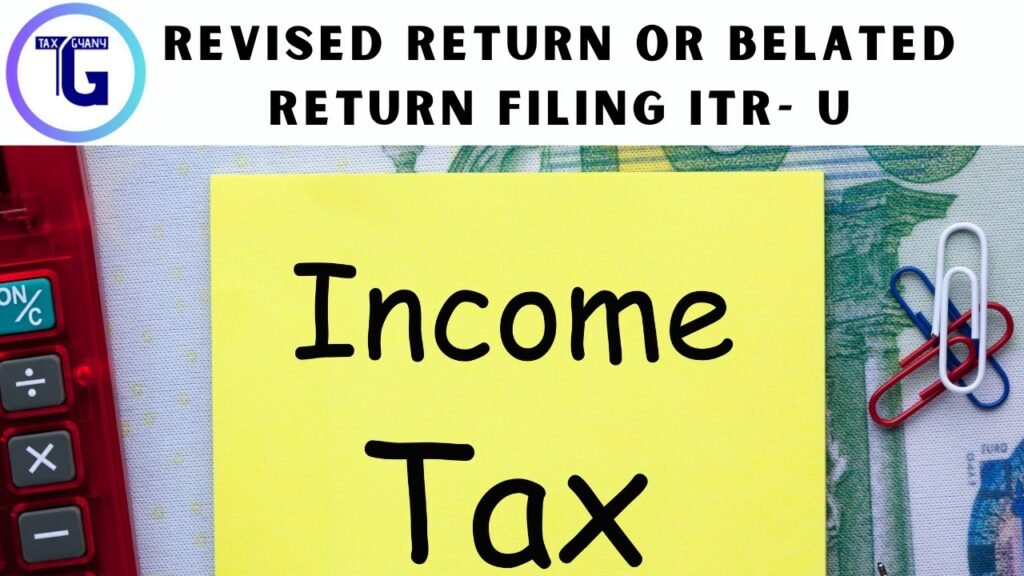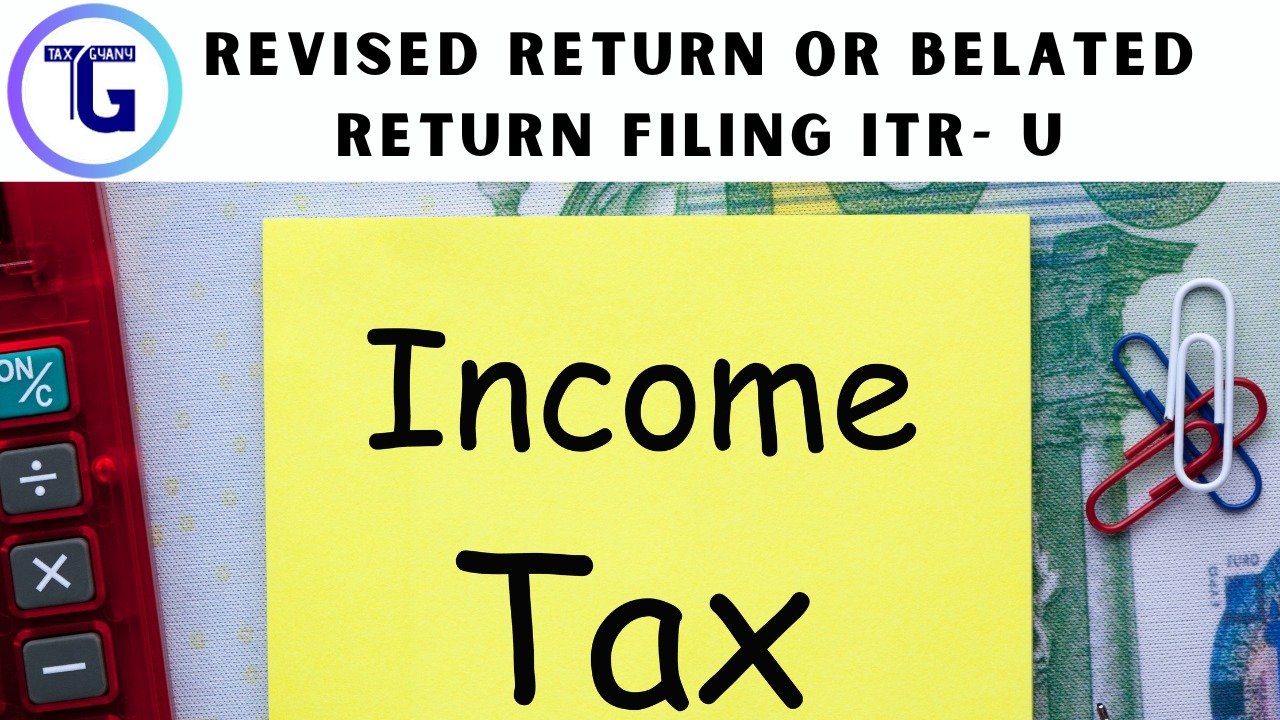- Introduction
Easy 3 Revised Return or Belated Return Filing ITR- U Revised Return or Belated Return Filing ITR- U Navigating the intricacies of Income Tax Return (ITR) filing can be daunting, especially when faced with the need to file a revised or belated return. In this blog post, we’ll delve into the nuances of filing a revised return or belated return using ITR-U, shedding light on the process, implications, and considerations involved.
Understanding ITR-U
ITR-U is the universal form provided by the Income Tax Department for filing income tax returns in India. Easy 3 Revised Return or Belated Return Filing ITR- U It caters to individuals who do not have any income from business or profession and are not eligible to file ITR-1, ITR-2, ITR-3, or ITR-4.
Applicability of ITR-U: Easy 3 Revised Return or Belated Return Filing ITR- U
Individuals with income from sources such as salary, pension, or income from one house property can use ITR-U to file their income tax returns. Easy 3 Revised Return or Belated Return Filing ITR- U Additionally, taxpayers who need to file a revised return or belated return can also utilize this form.
Revised Return Filing
- What is a Revised Return?
- A revised return is filed when a taxpayer discovers errors or omissions in their original return after filing it. This could include mistakes in reporting income, deductions, or tax calculations.
- A Revised Return refers to a corrected version of a previously filed tax return. In essence, it allows taxpayers to amend errors or make updates to information provided in their original tax return submission. This process is typically necessary when individuals or businesses realize they made mistakes, omitted relevant information, or need to update details such as income, deductions, credits, or personal information.
Key points regarding Revised Returns:
- Correction of Errors: The primary purpose of filing a Revised Return is to rectify errors or omissions made in the original tax return filing. This could include errors in reporting income, claiming deductions or credits, or providing inaccurate personal information.
- Deadline: Revised Returns must be filed within the timeframe specified by tax authorities. In many jurisdictions, there’s a specific deadline within which taxpayers can submit amended returns after the original filing.
- Process: The process for filing a Revised Return varies depending on the tax jurisdiction. In most cases, taxpayers need to complete a specific form provided by the tax authority, such as Form 1040X in the United States, outlining the changes made and reasons for the revision.
- Documentation: Taxpayers may need to provide supporting documentation along with the Revised Return to substantiate the changes being made. This could include receipts, invoices, or other relevant financial records.
- Impact on Tax Liability: Depending on the nature of the changes made in the Revised Return, there may be implications for the taxpayer’s tax liability. For example, correcting underreported income could result in additional taxes owed, while correcting overreported deductions may lead to a tax refund.
- Notification: Tax authorities generally require taxpayers to notify them when filing a Revised Return. This ensures that the updated information is properly recorded and processed in their systems.
- Penalties: Failure to file a Revised Return when necessary or submitting inaccurate information could result in penalties or interest charges imposed by tax authorities.

Overall, filing a Revised Return is a crucial step in ensuring accurate tax reporting and compliance with tax laws. Easy 3 Revised Return or Belated Return Filing ITR- U It provides taxpayers with an opportunity to correct mistakes and update their tax records with the relevant authorities.
Process of Filing a Revised Return
To file a revised return using ITR-U, taxpayers need to download the form from the income tax e-filing portal, make the necessary corrections, and submit it. Easy 3 Revised Return or Belated Return Filing ITR- U The revised return must be filed within the specified time limit, typically before the end of the assessment year or before the completion of assessment, whichever is earlier.
Belated Return Filing
- What is a Belated Return?
A belated return is filed when a taxpayer misses the original due date for filing their income tax return. Easy 3 Revised Return or Belated Return Filing ITR- U This could be due to various reasons such as oversight, delay in obtaining necessary documents, or other extenuating circumstances.
Process of Filing a Belated Return
To file a belated return using ITR-U, taxpayers need to download the form from the income tax e-filing portal, fill in the required details, and submit it. Easy 3 Revised Return or Belated Return Filing ITR- U However, it’s essential to note that filing a belated return may attract penalties and interest, so it’s advisable to file it at the earliest opportunity.
Conclusion
Easy 3 Revised Return or Belated Return Filing ITR- U In conclusion, filing a revised return or belated return using ITR-U is a straightforward process that allows taxpayers to rectify errors or omissions in their original returns or meet their tax obligations even after missing the deadline. By understanding the process and implications involved, taxpayers can navigate through the tax filing process with confidence and ease.
SOURCES: https://www.incometax.gov.in/iec/foportal/
FOR MORE INFORMATION:https://taxgyany.com/

